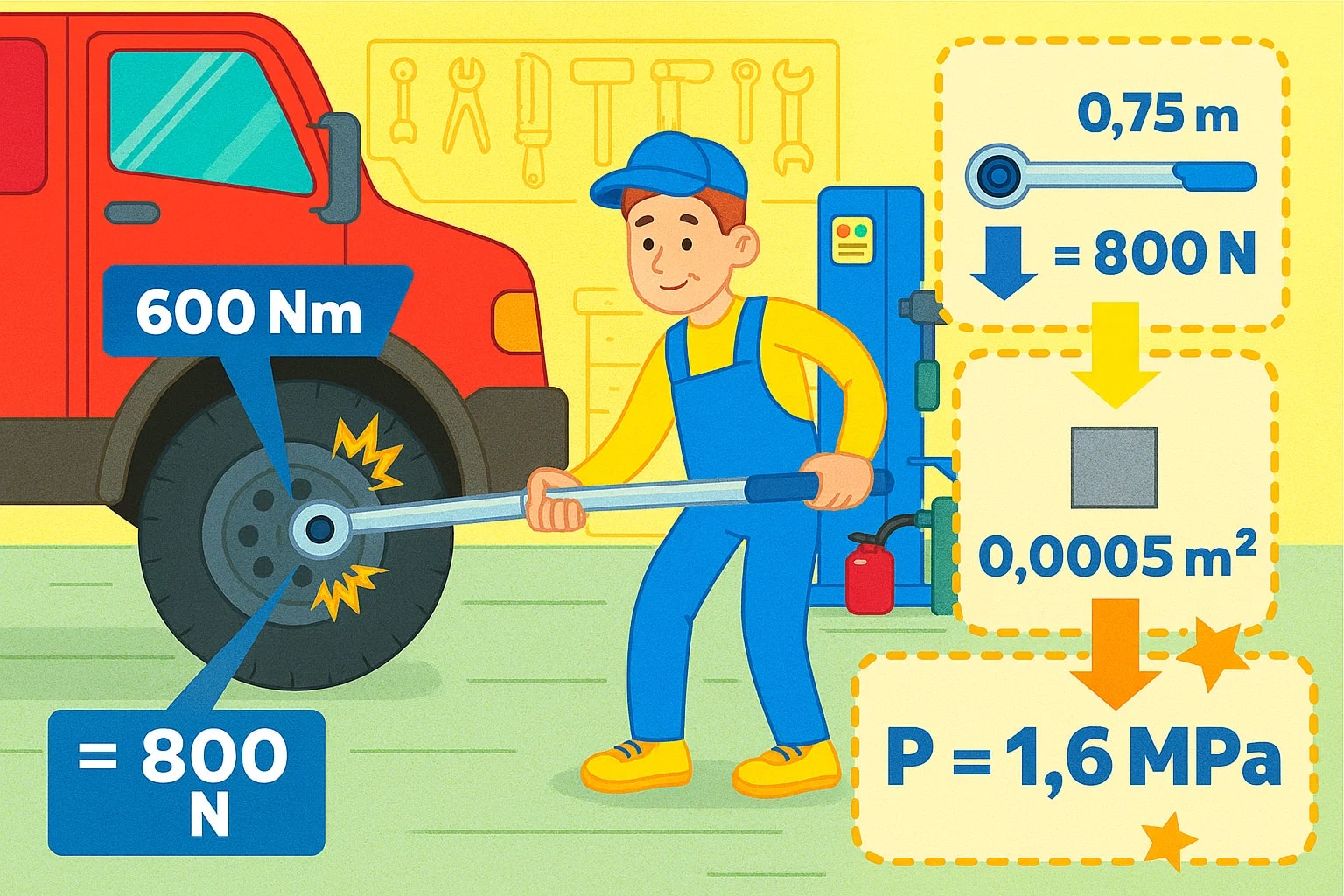newton meter to pascal – How to convert Nm to Pa
The conversion from newton meter to pascal isn’t as straightforward as simple scaling — it involves understanding how torque, force, and area interact. While Nm measures torque or energy, Pa measures pressure. To convert between them, you need context: the torque applied, the lever arm length, and the contact area.
What is a newton meter?
A newton meter (Nm) is the SI unit of torque, defined as the rotational force applied at a distance from the axis of rotation.
Formula:τ = F × r
where F is force in newtons and r is distance in meters.
It can also be used for work or energy in physics, where 1 Nm = 1 J.
What is a pascal?
A pascal (Pa) is the SI unit of pressure, defined as one newton per square meter.
Formula:P = F ÷ A
where P is pressure, F is force in newtons, and A is area in square meters.
Pascals are used in everything from atmospheric science to hydraulic systems.
How to convert newton meter to pascal
Since torque and pressure are different physical quantities, you can’t directly convert between them without knowing the surface area where the force is applied. The general process is:
-
Convert torque in Nm to force:
F = τ ÷ r
where r is the lever arm length in meters. -
Convert force to pressure:
P = F ÷ A
where A is the area in square meters.
Example: If you have 10 Nm of torque applied with a wrench 0.5 m long onto a bolt head with a contact area of 0.0004 m²:
-
F = 10 ÷ 0.5 = 20 N -
P = 20 ÷ 0.0004 = 50 000 Pa

You can solve it instantly with our Energy Converter, and if your work involves more than torque and pressure, the Conversion Tools collection covers hundreds of other units.
Do you know?
-
Newton meter fact: In Formula 1 racing, engineers fine-tune wheel lug torque to within fractions of a Nm for both safety and speed during pit stops.
-
Pascal fact: Standard atmospheric pressure at sea level is about 101 325 Pa, equivalent to 1 atmosphere (atm).
-
Newton meter fact: The torque required to open a standard soda bottle cap is around 0.5–1.0 Nm.
-
Pascal fact: Deep-sea submersibles must withstand pressures of over 100 million Pa at the ocean floor.
From Workshop to Hydraulics: A Real-World Example
In a busy automotive workshop, a mechanic uses a torque wrench to tighten the lug nuts on a heavy truck wheel. The tool’s setting reads 600 Nm. That’s enough rotational force to secure the wheel safely, but in the shop’s hydraulic testing station, that torque value becomes part of a pressure calculation.

The torque wrench applies its force over a handle length of 0.75 m, so the force at the nut is:F = 600 ÷ 0.75 = 800 N.
The nut’s contact surface with the wheel stud measures 0.0005 m². Dividing the force by this area gives:P = 800 ÷ 0.0005 = 1 600 000 Pa (1.6 MPa).
By expressing the same action in both Nm and Pa, the workshop can ensure torque settings meet the manufacturer’s recommended clamping pressures — essential for safety in heavy transport.
This example shows how Nm and Pa, while different, work together to translate rotational settings into the pressures that keep mechanical systems secure.
Translating Force Across Units
The newton meter to pascal conversion isn’t a one-step calculation — it’s a bridge between rotational force and applied pressure. Nm captures the turning effort, while Pa reveals how that force is distributed over an area.
From automotive torque specs to industrial hydraulics and even aerospace assembly, switching between these units allows engineers to check performance, safety, and efficiency at every stage. And with the right formulas — or a reliable converter — it’s easy to see how a twist of a wrench can translate into the pressure that holds the world together.

